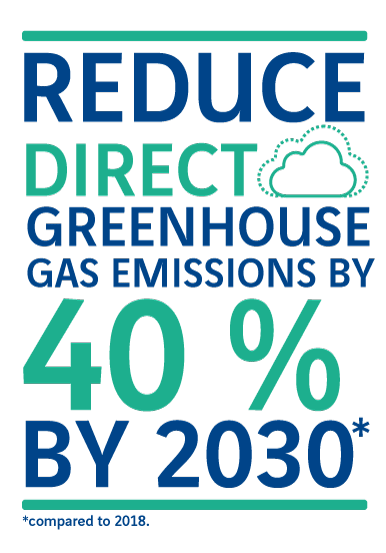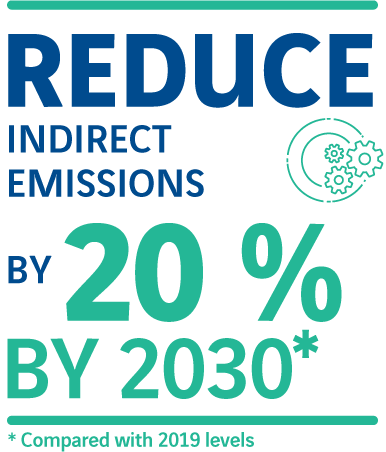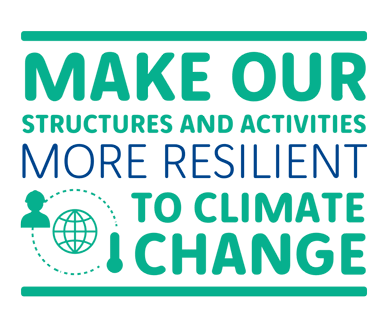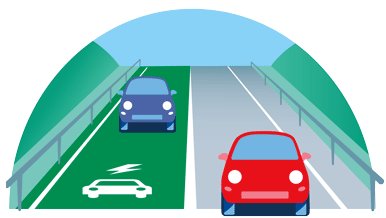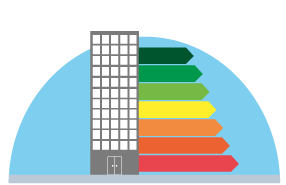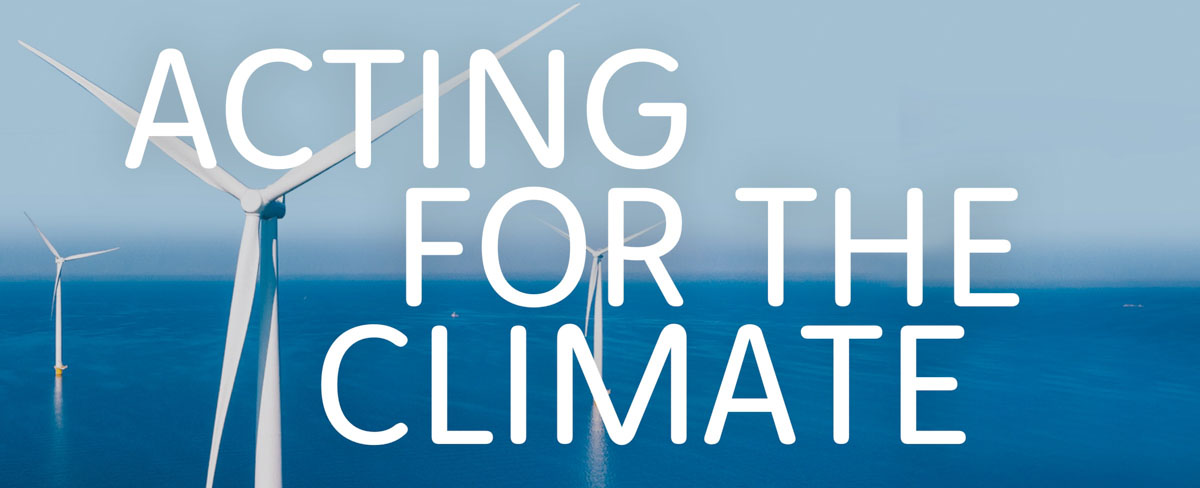
VINCI operates in sectors that contribute significantly to climate change, as transport and construction account for 48% of greenhouse gas emissions each year. Moreover, these sectors are acutely exposed to the risks arising from climate change. That is why the Group has set an ambitious target to cut its direct and indirect emissions and is taking action to achieve it throughout its value chain.
Limiting the future consequences of climate change
This means optimising our energy consumption, switching to renewable sources on a massive scale, thinking again about the way we design projects, and thereby making our buildings and infrastructure more resilient, clean and energy efficient. It also means inventing new services and solutions that transform mobility, housing and lifestyles, so that our customers can shrink their carbon footprints too.
In this way, VINCI plays its part in the collective effort to achieve carbon neutrality, which is vital in limiting the rise in global temperatures.
OUR AMBITION FOR 2050:
NET ZERO GREENHOUSE GAS EMISSIONS.
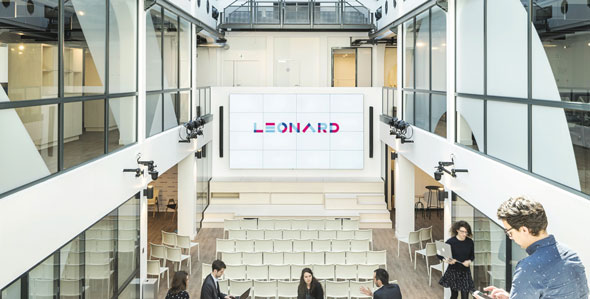
A strategy of continuous improvement
VINCI mobilises its teams and innovation potential to reduce the impact of its own activities as well as the carbon footprint and climate exposure of the projects it undertakes and manages for clients and local authorities.
VINCI is reassessing all its production and operating processes and equipment. The action plans currently being rolled out at Group level and within each business line, together with indicators to measure progress and unite employees, stakeholders and the users of buildings and infrastructure managed by VINCI in reducing both direct and indirect emissions simultaneously.
In addition, it has set up a working group within Leonard, the Group’s innovation and foresight platform, bringing together experts in all its fields to progressively factor climate resilience into its proposals, projects, structures and solutions.

VINCI’s greenhouse gas emissions reduction trajectory is compatible with the Paris Agreement, which is aimed at keeping global warming well within 2°C between now and the end of the century. The Group’s target is to reduce its direct (Scopes 1 and 2) emissions by 40% by 2030 (in its historical configuration and compared to 2018).
Stepping up its environmental ambition, VINCI has set a target to reduce its indirect (upstream and downstream Scope 3 emissions) by 20% by 2030 compared to 2019.
This commitment, endorsed by the Science Based Targets initiative (SBTi), aligns the Group’s trajectory with its “well below 2°C” aim and its methodological framework is certified.

Direct emissions
The Group aims to reduce its direct emissions (Scopes 1 and 2) by 40% by 2030 (compared with 2018). For concessions, the target is a 50% reduction over the same period.
Direct greenhouse gas emissions by source, a total of 2.4m tCO2 eq in 2023.
| Sources | Direct greenhouse gas emissions by source |
|---|---|
| Site machinery and heavy vehicules | 33% |
| Company cars and utility vehicules | 31% |
| Industrial activities | 29% |
| Buildings | 7% |
Actions taken
Worksite machinery and heavy vehicles
• Replacing the fleet of worksite machinery, company cars, utility vehicles and heavy goods vehicles with more energy-efficient models, including electric, hybrid, hydrogen- or biogas-powered utility vehicles, and electric cars with lower greenhouse gas emissions.
• Encouraging employees to reduce their own consumption, with carsharing platforms, training in eco-driving and incentives to switch to active travel.
• Teaming up with worksite machinery manufacturers and leasing companies to test innovative low-carbon systems in real-life conditions.
Industrial activities
• Optimising energy efficiency and replacing high greenhouse gas emitting energy sources with natural or renewable gas.
Buildings and worksite facilities
• Auditing energy efficiency of buildings and stepping up thermal renovation, temperature regulation, and eco-design.
• Using more worksite facilities meeting high energy efficiency standards.
Renewable energies
• Increasing the use of renewable energies (25% of electricity consumed in 2021), especially by installing photovoltaic power plants to generate power for use on site
Indirect emissions
Scope 3 Emissions
Estimated at approximately 43.5 Mteq CO2 in 2023
| 36% UPSTREAM | |
|---|---|
| Materials purchases | 18% |
| Other purchases (incl. transport) | 6% |
| Subcontracting, works contracts | 4% |
| Other upstream impacts | 9% |
| 64% DOWNSTREAM | |
|---|---|
| Concessions traffic | 45% |
| Use of power facilities | 9% |
| Buildings | 5% |
| Other downstream impacts | 5% |
Action taken
Supply chain
• Embarking on an improvement drive with strategic suppliers and subcontractors.
• Gradually mainstreaming low-carbon concretes on all VINCI Construction and VINCI Autoroutes worksites.
2030 target for VINCI Construction: 90% low-carbon concrete
Customer solutions
• Applying environmental solutions that help our customers reduce their carbon footprint: sustainable construction, energy efficiency, sustainable mobility.
• Developing products, services and expertise in renewable energies to contribute fully to the energy transition and improve the energy mix of the future.
• Encouraging users to switch to low-carbon options on motorways (expanding electric vehicle charging capacity, carsharing facilities, multimodal hubs and express bus services) and in airports (adjusting airport tax charges based on aircraft carbon emissions and contributing to developing sustainable biofuel and hydrogen systems).
Eco-design
• Developing tools to quantify the carbon impact of projects during the bidding phase in order to propose low-carbon alternatives.
• Implementing low-carbon strategies in engineering (e.g. VINCI Construction’s Environment in Design approach).
• Deploying an approach to systematically use low-carbon materials when project owner, for example by halving average carbon emissions on each VINCI Autoroutes projects by 2030.
Climate resilient projects and structures
Global warming and especially extreme climate events represent a physical threat to VINCI’s structures and projects.
Climate resilience forms an integral part of our project risk assessment process and ensures the regions in which we operate are better equipped to withstand climate change.
2023 KEY FIGURES
2.4 Mt
of greenhouse gas emissions in 2023 (Scopes 1 and 2)
14%
reduction in greenhouse gas emissions (Scopes 1 and 2, excluding impact of acquisitions) between 2018 and 2023
43 Mt
of greenhouse gas emissions in 2023 (Scope 3)
37%
of electricity consumption from renewable sources in 2023
50%
low-carbon concrete usedby VINCI Construction’s Building France and Civil Engineering
Monitoring VINCI’s emissions reduction trajectory – Progress in 2023
| Year | Initial trajectory | Realized trajectory |
|---|---|---|
| 2018 | 40% | 40% |
| 2019 | 40% | 39.2% |
| 2020 | 37% | 31.5% |
| 2021 | 35% | 31.6% |
| 2022 | 32% | 31.2% |
| 2023 | 29% | 30.0% |
| 2024 | 26% | |
| 2025 | 21% | |
| 2026 | 17% | |
| 2027 | 12% | |
| 2028 | 7% | |
| 2029 | 4% | |
| 2030 | 0% |
Emissions reduction trajectory for Scopes 1 and 2

